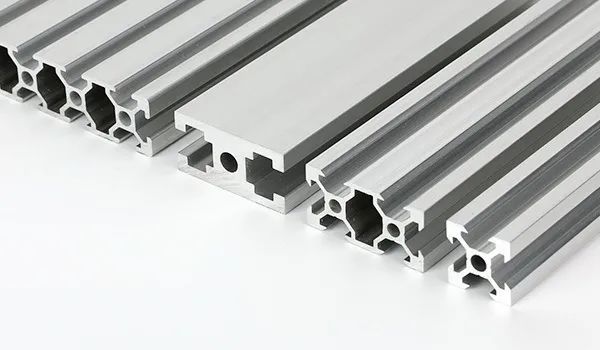Do you know how much money your doors and windows waste every year?
Release time:
2015-07-17
Doors and windows, we are so familiar with things, do you know, your hard-earned money, from the waste of doors and windows here how much? The answer is: we spend nearly twice as much every year to pay for our own home is not energy-saving doors and windows! When you enjoy the comfort of air conditioning or floor heating in the house, closed doors and windows can only solve the problem of heat convection, but can not block the conduction of heat. A large amount of energy in the house is lost to the outside through the doors and windows of your house, resulting in waste of energy consumption and increasing your energy expenditure. Things would be different if your doors and windows were more energy efficient. One day in early 2008, a German businessman used European standard energy-saving doors and windows to repair the villa in order to make his villa in the suburbs of Beijing meet the green energy-saving standards of German "passive house. After energy-saving renovation, he found that the indoor air-conditioning in summer was 8 degrees Celsius lower than the outdoor, and the monthly electricity bill was also half lower than in the past. Even if the air conditioner is turned on, it will not run refrigeration as frequently as before, with less noise and greatly improved comfort. In fact, the importance of energy-saving doors and windows has long been widely recognized in developed countries. According to the 2013-2017 China metal doors and windows industry development prospects and investment forecast analysis report, in Europe, the use of energy-saving doors and windows has reached 67% of the total number of doors and windows. The vast majority of doors and windows in China are non-energy-saving plastic steel and ordinary aluminum alloy doors and windows, energy-saving doors and windows accounted for only 0.4 percent of the total number of windows. Doors and windows are not energy-saving not only make people spend a lot of money for daily energy expenditure, but also make the country produce huge energy waste. The survey shows that among the main energy consumption in our society, building energy consumption has accounted for more than 20% of the total energy consumption of the whole society since 2000. With the crazy development of real estate in recent years, building energy consumption has accounted for more than 40% of the total energy consumption of the whole society, while the energy consumption lost through doors and windows accounts for about 50% of the total energy consumption of the whole society. In other words, the energy consumption lost through doors and windows accounts for about 20%. The low penetration rate of energy-saving doors and windows has caused China's building energy consumption to be more than 3 times that of developed countries. According to calculations by relevant departments, if the energy-saving level of doors and windows in my country's 43 billion square meters of existing construction area can reach the current European standards, 0.42 billion tons of standard coal will be saved each year, which is equivalent to 20% of my country's total annual coal output. The reduction of coal consumption will directly help to reduce the generation of haze (central heating a large amount of coal is one of the main causes of haze weather in winter in the north). The resulting health level improvement, ecological environment improvement and a series of benefits, will far exceed the cost of energy-saving doors and windows replacement. "Now the latent energy waste is a hundred times or a thousand times larger than the waste of food and drink, among which the door and window is a 'big funnel'. Every household can't live without the door and window, but now most people don't understand the door and window." Ni Shouqiang, vice president of China Construction Metal Structure Association, said the reason. What is the door and window energy saving? In the door and window industry has a heat transfer coefficient, K value. The greater the K value, the more heat is transferred and the more energy is lost; on the contrary, the less heat is transferred, the less energy is lost. According to the current EU standards, the K value of doors and windows is generally between 1.1 and 1.3. In recent years, the K value standard of doors and windows in Germany has been reduced from 1.3 to 1.1, Switzerland has been adjusted from 1.3 to 0.7, and France plans to achieve zero energy consumption in buildings by 2020. On the other hand, the current situation of energy-saving doors and windows in China is worrying. Compared with developed countries, we are nearly 30 years behind. For example, the K value implemented in Shanghai is 2.8, which is equivalent to the German standard in 1984. Fortunately, the relevant government departments have realized the importance of energy-saving doors and windows, and more stringent energy-saving standards for doors and windows are being formulated and introduced throughout the country. Beijing and Tianjin have begun to implement the standard of K value ≤ 2.0, and Inner Mongolia and Northeast China have also implemented the standard of ≤ 2.2. At the Copenhagen Climate Conference, China solemnly promised to the world: "By 2020, my country's carbon dioxide emissions per unit of GDP will drop by 40%-50% compared with 2005, and by 2020, my country's non-fossil energy will account for 15% of one-time energy consumption.%." This means that in the next five years, China will take effective measures to increase energy conservation and emission reduction. Building energy consumption, which accounts for a large proportion of social energy consumption, will bear the brunt, while doors and windows, as the lighting parts of building openings, actually account for 50% of building energy consumption, so that the transformation of doors and windows industry to energy conservation will become an inevitable trend.
When you enjoy the comfort of air conditioning or floor heating in the house, closed doors and windows can only solve the problem of heat convection, but can not block the conduction of heat. A large amount of energy in the house is lost to the outside through the doors and windows of your house, resulting in waste of energy consumption and increasing your energy expenditure. It would be different if your doors and windows were more energy efficient.
One day in early 2008, a German businessman used European standard energy-saving doors and windows to repair his villa in the suburbs of Beijing in order to make it meet the green energy-saving standards of German "passive house. After energy-saving renovation, he found that the indoor air-conditioning in summer was 8 degrees Celsius lower than the outdoor, and the monthly electricity bill was also half lower than in the past. Even if the air conditioner is turned on, it will not run refrigeration as frequently as before, with less noise and greatly improved comfort. In fact, the importance of energy-saving doors and windows has long been widely recognized in developed countries. According to the 2013-2017 China metal doors and windows industry development prospects and investment forecast analysis report, in Europe, the use of energy-saving doors and windows has reached 67% of the total number of doors and windows. The vast majority of doors and windows in China are non-energy-saving plastic steel and ordinary aluminum alloy doors and windows, energy-saving doors and windows accounted for only 0.4 percent of the total number of windows.
Doors and windows are not energy-saving not only make people spend a lot of money for daily energy expenditure, but also make the country produce huge energy waste. The survey shows that among the main energy consumption in our society, building energy consumption has accounted for more than 20% of the total energy consumption of the whole society since 2000. With the crazy development of real estate in recent years, building energy consumption has accounted for more than 40% of the total energy consumption of the whole society, while the energy consumption lost through doors and windows accounts for about 50% of the total energy consumption of the whole society. In other words, the energy consumption lost through doors and windows accounts for about 20%. The low penetration rate of energy-saving doors and windows has caused China's building energy consumption to be more than 3 times that of developed countries. According to calculations by relevant departments, if the energy-saving level of doors and windows in my country's 43 billion square meters of existing construction area can reach the current European standards, 0.42 billion tons of standard coal will be saved each year, which is equivalent to 20% of my country's total annual coal output. The reduction of coal consumption will directly help to reduce the generation of haze (central heating a large amount of coal is one of the main causes of haze weather in winter in the north). The resulting health level improvement, ecological environment improvement and a series of benefits, will far exceed the cost of energy-saving doors and windows replacement.
"Now the latent energy waste is a hundred times or a thousand times larger than the waste of food and drink, among which the door and window is a 'big funnel'. Every household can't live without the door and window, but now most people don't understand the door and window." Ni Shouqiang, vice president of China Construction Metal Structure Association, said the reason.
What is the door and window energy saving? In the door and window industry has a heat transfer coefficient, K value. The greater the K value, the more heat is transferred and the more energy is lost; on the contrary, the less heat is transferred, the less energy is lost. According to the current EU standards, the K value of doors and windows is generally between 1.1 and 1.3. In recent years, the K value standard of doors and windows in Germany has been reduced from 1.3 to 1.1, Switzerland has been adjusted from 1.3 to 0.7, and France plans to achieve zero energy consumption in buildings by 2020. On the other hand, the current situation of energy-saving doors and windows in China is worrying. Compared with developed countries, we are nearly 30 years behind. For example, the K value implemented in Shanghai is 2.8, which is equivalent to the German standard in 1984.
Fortunately, relevant government departments have realized the importance of energy-saving doors and windows. More stringent energy-saving standards for doors and windows are being formulated and introduced throughout the country. Beijing and Tianjin have begun to implement the standard of K value ≤ 2.0, and Inner Mongolia and Northeast China have also implemented the standard of ≤ 2.2.
At the Copenhagen Climate Conference, China solemnly promised the world: "By 2020, my country's carbon dioxide emissions per unit of GDP will drop by 40%-50% compared with 2005, and by 2020, my country's non-fossil energy will account for one-time energy consumption. Reach 15%." This means that in the next five years, China will take effective measures to increase energy conservation and emission reduction. Building energy consumption, which accounts for a large proportion of social energy consumption, will bear the brunt, while doors and windows, as the lighting parts of building openings, actually account for 50% of building energy consumption, so that the transformation of doors and windows industry to energy conservation will become an inevitable trend.
Contact Information
Customer Service Tel: +86-539-7177878
Mailbox: kemet@sdkemet.com
Zip Code: 273400
Address: Linyi City, Shandong Province
Copyright©2023 Kemet New Materials Technology Co., Ltd. All Rights Reserved





